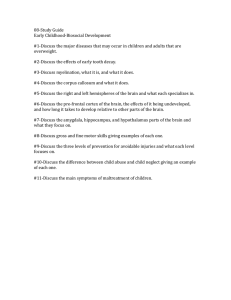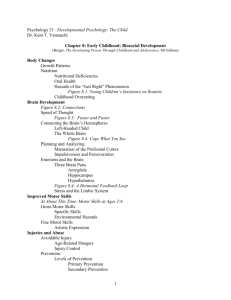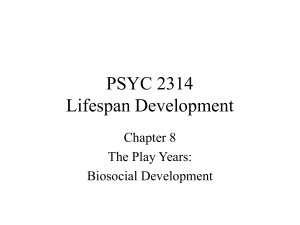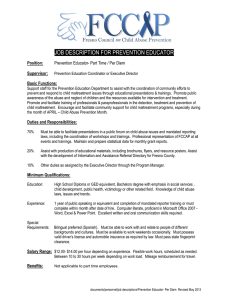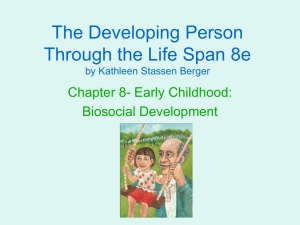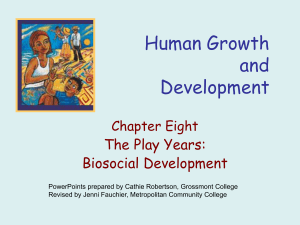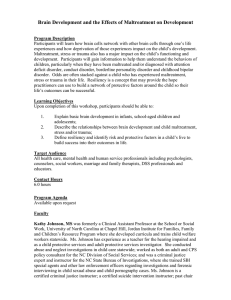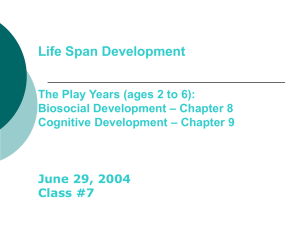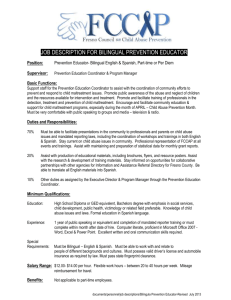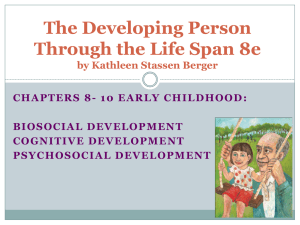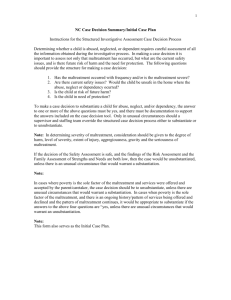The Play Years - Austin Community College
advertisement
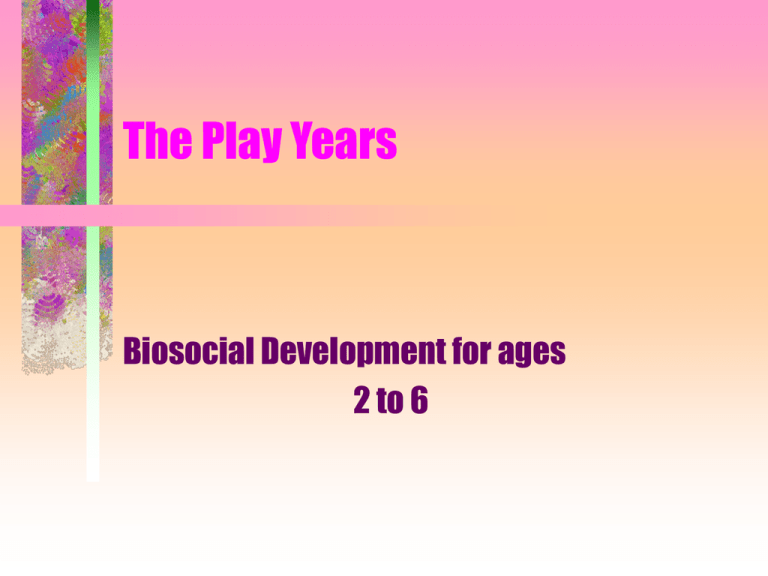
The Play Years Biosocial Development for ages 2 to 6 Three primary factors influencing physical growth • Genetic Background • Health care • Nutrition – this factor accounts for differences in size of children between rich and poor nations Dietary issues • For all preschoolers, rate of growth slows during this developmental stage • This results in intake of fewer calories • How these calories are used becomes an important issue for developing bodies Dietary issues for US children • Iron deficient anemia – related to low intake of iron rich foods: leafy vegetables, raisins and other dried fruits, whole grains, eggs, high quality meats • Too much sugar intake • Too much fat intake • Too little fruit and vegetable intake Experience and the Brain • Rapid rate of myelination of neurons occurs at this stage • Increasing neural connections due to experience • Specific areas of brain expanding relating to emotions, motor functioning, and intellect • Corpus callosum increases in size at age 5 Improved brain functioning • These physical developments allow preschoolers greater control of emotions, muscle coordination, and reaction time • Corpus Callosum growth allows hemispheres of brain better communication and the child can successfully involve both hemispheres in coordination,sensory, emotion, thinking and reaction tasks Readiness for Reading and Math • Development of hemispheres and increased myelenation also aids with the visual pathway, strengthening cognitive abilities to recognize symbols while improving eye-hand coordination and enabling effective writing • These changes occur simultaneous to reading, writing, and math instruction in schools Implications for learning • While maturation makes reading, math and writing tasks salient to the child, early exposure to rich language, literature and math concepts are recommended • Educational programs which keep activities at the appropriate developmental stage will increase motivation by providing early successful academic experiences Injury control • Preventing injuries by planning ahead, controlling circumstances, preventing certain dangerous activities and adding safety features to other activities – – – – – regulation of child proof safety caps car seat laws mandatory fencing around pools helmets worn by cyclists flame-retardant sleep wear Mastering Gross Motor Skills • Learned by teaching themselves and from other children, rather than through adult instruction Children’s Art • • • • • Expresses symbolic understanding Requires fine motor coordination Enhances feelings of accomplishment Provides a medium for self-correction Detail in drawings parallel cognitive development • Encourages expression of self Child Maltreatment • Abuse: any action harmful to an individual’s well-being • Neglect: any inaction that harms or endangers a person • both terms include either physical and/or psychological harm • Maltreatment: any intentional harm or endangerment to anyone under 18 years Cultural Values that protect children from Maltreatment • Children are not held responsible for their actions • Children are highly valued • Children are not the sole responsibility of parents • Aggression of any kind is frowned upon Family contextual factors contributing to maltreatment • Poverty • Social Isolation Possible Consequences of Maltreatment • • • • • • • Underweight Slower to talk Less able to concentrate Delayed academic growth Negative perception of others Use of drugs Enter poor relationships Possible Consequences of Maltreatment • • • • Become aggressors or victims Sabbotage their careers Establish unhealthy eating patterns Engage in self-destructive behavior Intergenerational Transmission • A destructive and inaccurate assumption that children who are abused will abuse their own children • Between 30% and 40% do become abusers, but the majority do not • This is a higher rate than the majority population • Adults who have processed and healed their own abuse are less likely to abuse Public Policies that may Prevent Maltreatment • Primary Prevention: – Build neighborhoods that support children and families (both financially and relationally) – Encourage planned parenthood – Encourage building of communities – Close the gap between rich and poor
